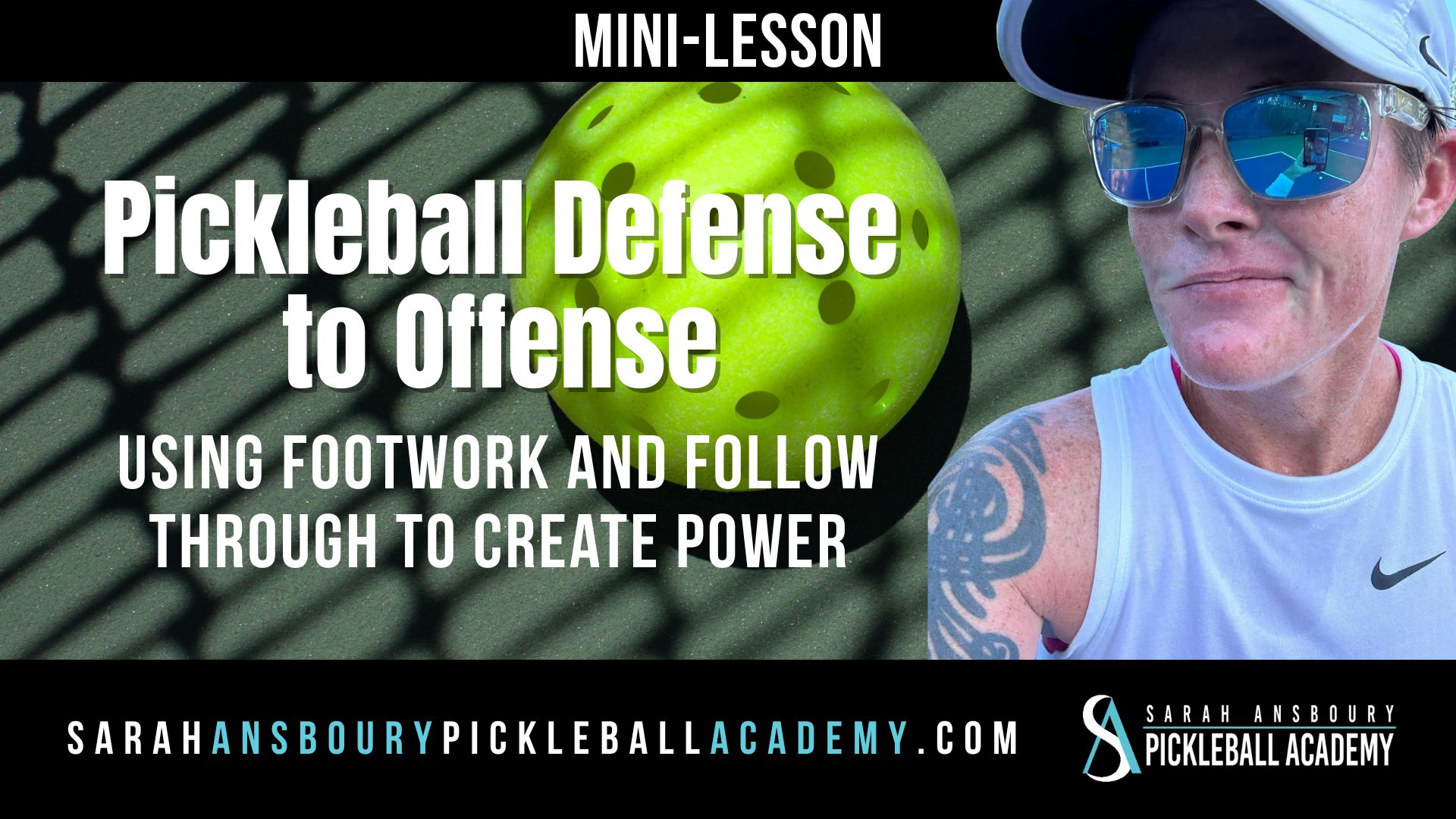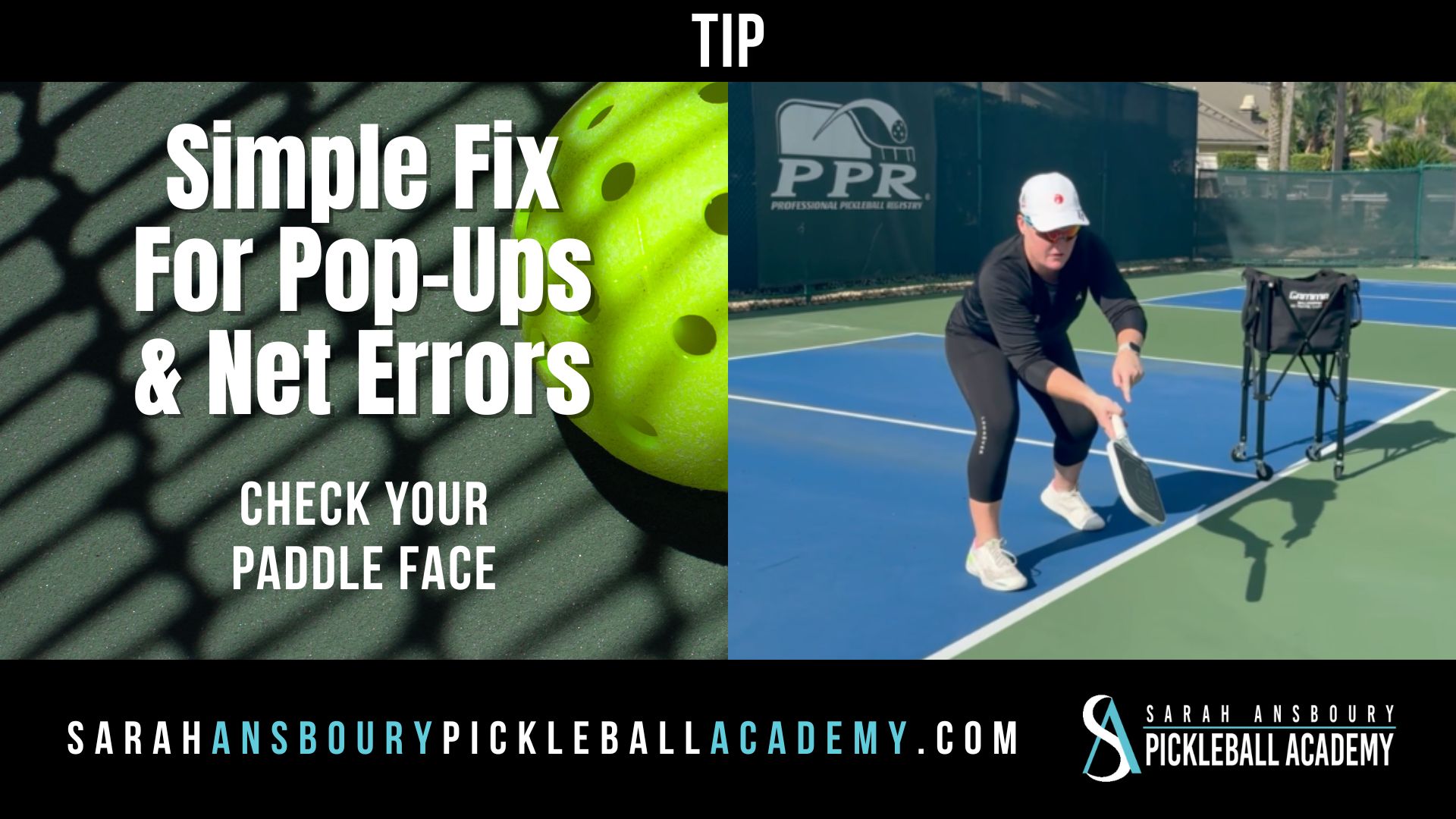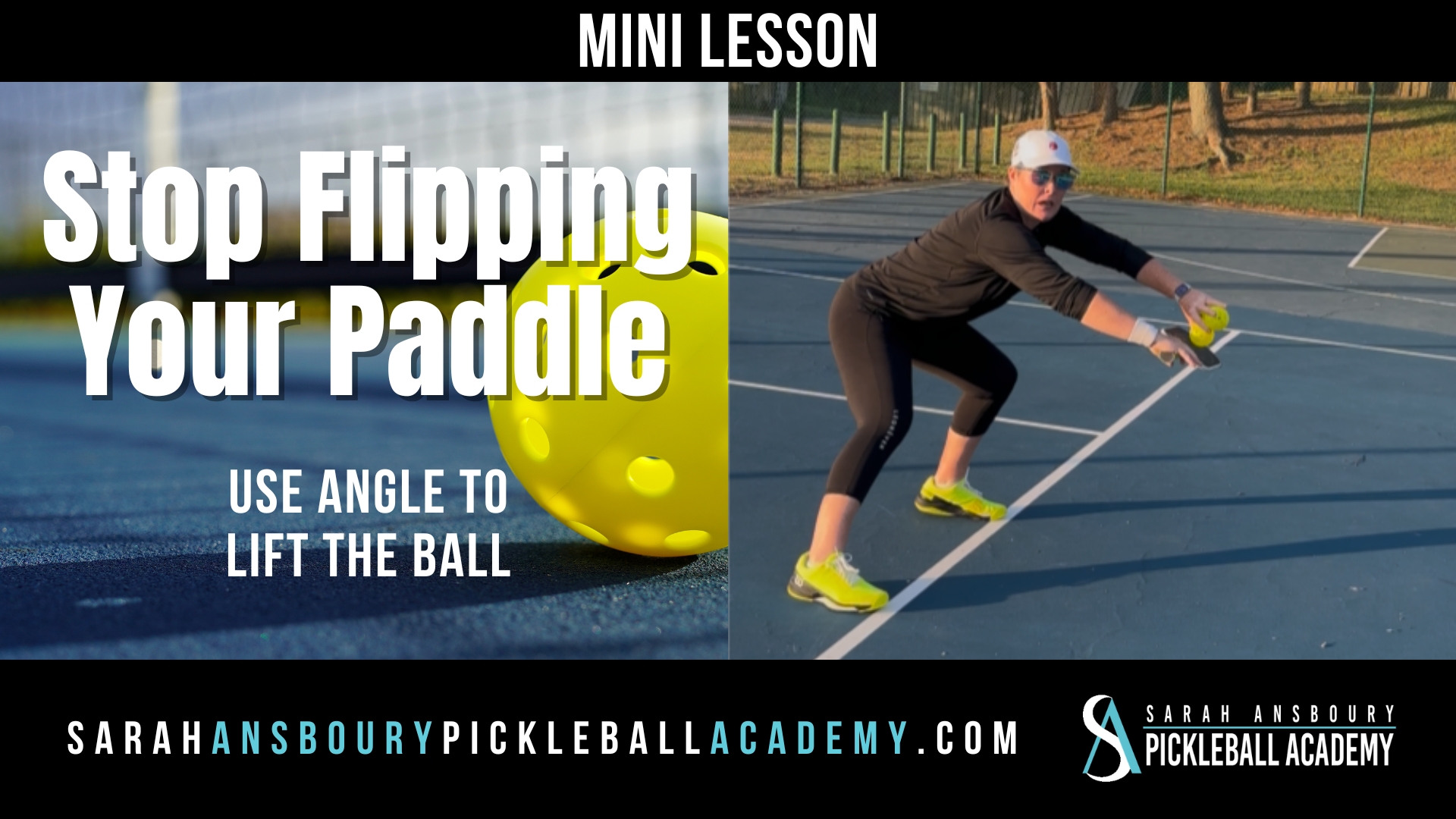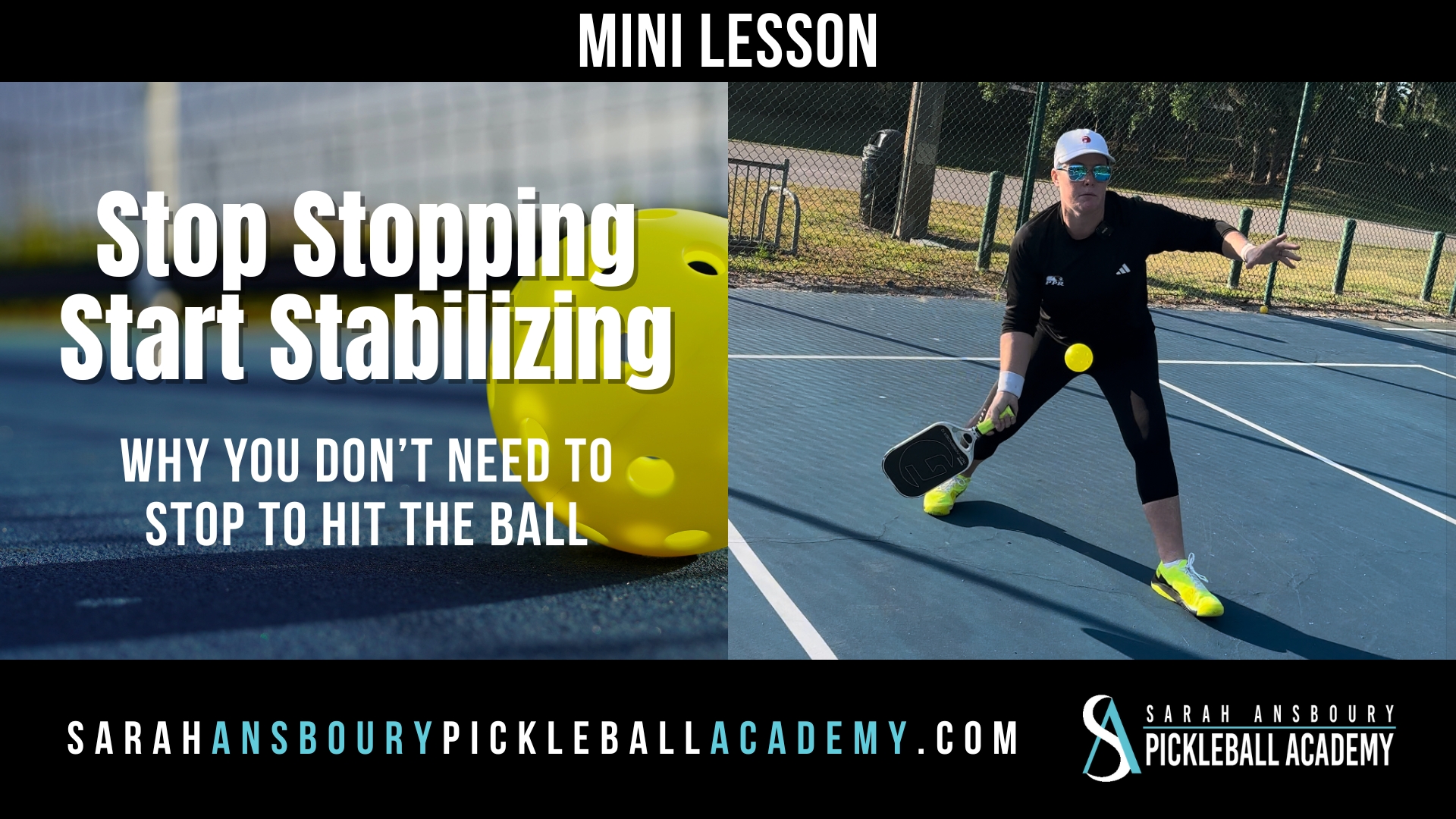A reader recently asked why I advise people to stop shuffling. Today, I offer thoughts, observations and why I feel it is best to slow down and stop shuffling.
The Slowest Player on the Court
When I join in during recreational play, I often am the slowest person on the court. Everyone seems to be in such a hurry! They scurry from side to side, running to one spot while leaving another open. They lunge forward, head first and paddle last, trying to get to the non-volley zone line.
Their movements are exacerbated by bending over. The average human head weighs more than ten pounds, so it is only natural when we bend our backs and lead with our heads that we will be pulled off-balance and out of position. If you are leaning left and then need to move right, the weight of your head pulling in one direction will make it more difficult to react.
Rather than focusing on “getting to the ball”, I want you to focus on being in control. I want you to be balanced. Instead, focus on what you want to do with the ball.
Watch the Pros
 Take some time to watch the pros play. You will notice that they seem to hurry a lot less than lower ranked players. They work, as a unit with their partner, to cover the whole court. They don’t both go for a ball, leaving a portion of the court uncovered. They aren’t scurrying about wasting motion. They seem in control…even though the ball is likely being returned more quickly than yours, they often seem to have plenty of time.
Take some time to watch the pros play. You will notice that they seem to hurry a lot less than lower ranked players. They work, as a unit with their partner, to cover the whole court. They don’t both go for a ball, leaving a portion of the court uncovered. They aren’t scurrying about wasting motion. They seem in control…even though the ball is likely being returned more quickly than yours, they often seem to have plenty of time.
Getting to the NVZ Line
When I move from the baseline to the non-volley zone, I think of it as a walk rather than a run. I always try to take smaller, deliberate steps that allow me to change direction naturally. I hold my head high, over my feet rather than in front of my feet. I lead with my paddle. I follow the path of the ball, knowing my partner will shift appropriately.
Stop Shuffling at the NVZ Line
I know many pickleball instructors may tell you to shuffle along the non-volley zone, but I am telling you to STOP being a bobblehead!
- It is hard on your knees;
- It is difficult to remain balanced;
- When you don’t pick up your feet properly you can’t transfer your weight effectively; and
- Often you don’t stop and get planted before you make contact with the ball.
When I move along the non-volley zone line, I imagine a resistance band around my ankles. I want to take one step at a time. I want my lead leg (if I am moving to the right that is my right leg) to pull me in the direction I intend to go. First one foot, then the other. Instead of sliding along, I want you to consciously pick up your feet, take separate steps and remain balanced and in control.
Move Efficiently
To move most efficiently, we want to move from the ground up. Our weight is transferred and moved into the ball as we move. My paddle is my “center”…the tip of the paddle follows the ball. As my paddle moves, my head, shoulders, and hips rotate in one, fluid motion.
When we slow down and keep our paddle up, in front of us, our head stays up and allows us to see the whole court. If you only see part of the court, you are likely moving your head too much. If you are out of breath after most points, you are moving far too much. Slow down. Focus on your breathing. Lift your feet and move more efficiently.










